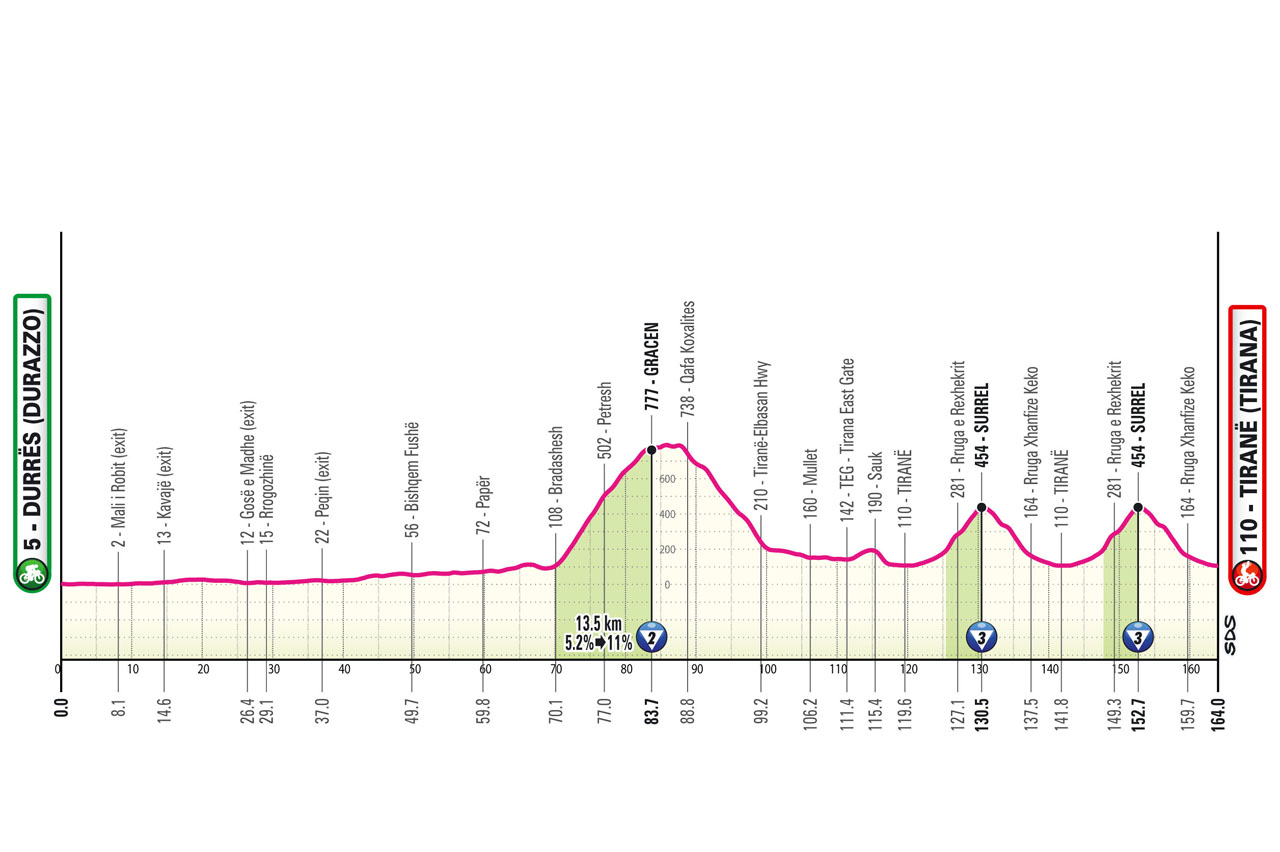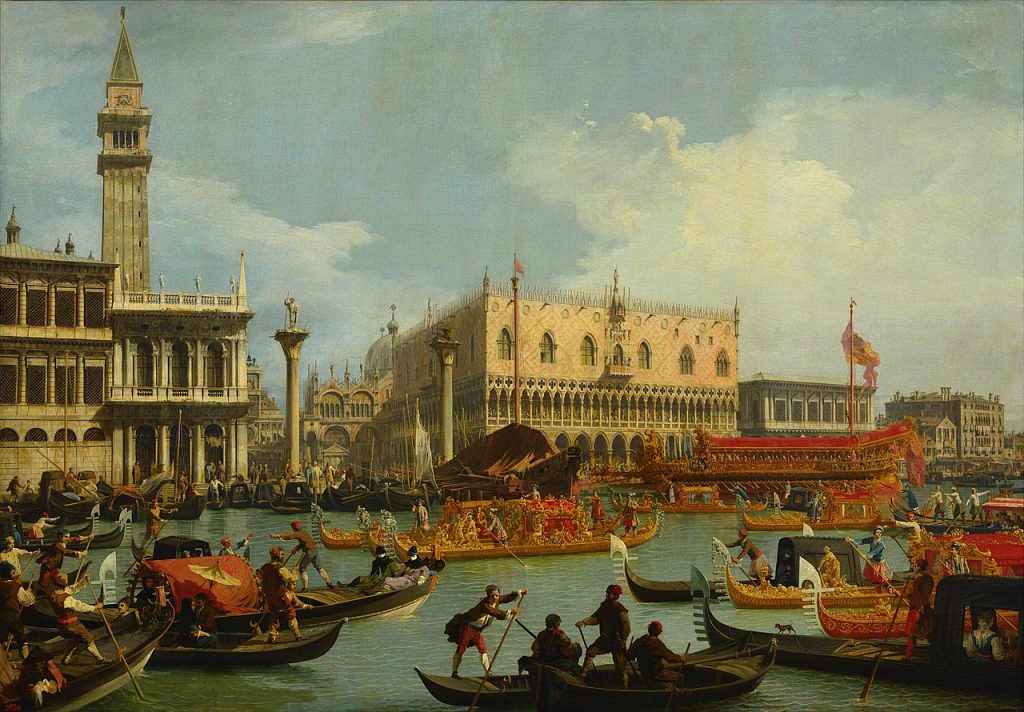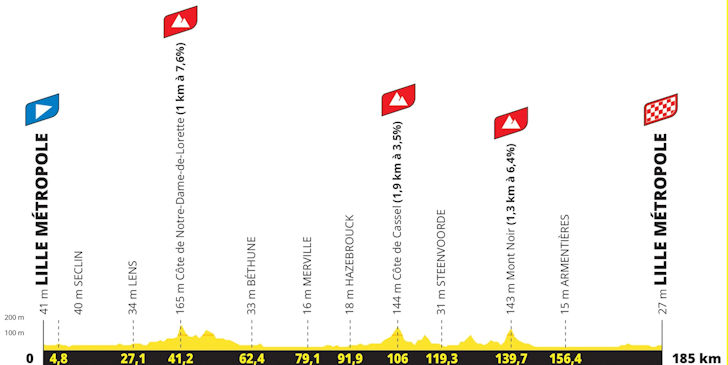Giro d'Italia 2025 will start in Albania. The first stage will take place on the 9th May 2025 hetween Durrës (Durazzo) and Tiranë (Tirana). It will be a rather hilly start with one 2 and teo 3 category climbs during the second part of the 164 long course.


MY LAST ROAD CYCLING SEASON: IT'S REALLY TIME TO SAY GOODBYE
I did not intend to watch the first three stages, only when the race would return to Italy. Nothing against Albania, for real. It's not like three years ago. when avoiding the three Hungarian stages was like a little political protest from me. Now I just think the first three stages (one of them is an individual time trial) wouldn't really give enough writing material for me, and now, for the last time I spend time with present road cycling events, effectivity seems the most valuable thing for me. For the last time, making the most of it by spending only reasonable time with it.
So, my intention was only watching some kind of summaries of the stage. Feeling a little bit happy (my love for this sport did not disappear entirely yet) for the duccess of Mads Pedersen, I started watching the summary on Max/HBO (whichis, oddly enough the place I can get the stream for cycling races), and instantly got annoyed.
NEXT STAGES
Giro d’Italia 2025 Stage 2 (Tiranë -Tiranë, 13,7 km ITT)
On 10 May Giro d’Italia 2025 continues with the 2nd stage. Still in Albania, in Tiranë (Tirana) the… Read More »Giro d’Italia 2025 Stage 2 (Tiranë -Tiranë, 13,7 km ITT)
Giro d’Italia 2025 Stage 3 (Vlorë -Vlorë 160 km)
Giro d’Italia 2025 says good bye to Albania with arathr hilly stage on 11 May 2025.
Giro d’Italia 2025 Stage 4 (Alberobello – Lecce 189 km)
Stage 4 of Giro d’Italia 2025 will be the first day in Italy after a 3-day trip in… Read More »Giro d’Italia 2025 Stage 4 (Alberobello – Lecce 189 km)
Giro d’Italia 2025 Stage 5 ( Ceglie Messapica – Matera 151 km)
Mostoy flat and a bit of a climbing (sort of) at the end. Ceglie Messapica – Matera 14… Read More »Giro d’Italia 2025 Stage 5 ( Ceglie Messapica – Matera 151 km)
CYCLIST OF THE DAY /FACES FROM THE GIRO D'ITALIA PELOTON

Every day during the Giro d'Italia I'm going to introduce a cyclist from the history of the competition. I was thinking about that I might start with Franco Balmamion, currently the oldest living Giro d'Italia winner. He won the race twice, in 1962 and 1963, without winning a single stage during both occasion?
Click here and read more about him>>
If you would like to read about more cyclists involved in the history of Giro d'Italia, Vintage Road Cycling Stories (a sister blog of this website) provides may kore introduction of them. Just click here>>
(If ypu want more, not only riders of the historical Giro d'Italia peloton, please click here>> )
IF YOU CAN'T STOP THINKING ABOUT THE ROMAN EMPIRE
Durrës, the host city of the Grande Partenza was an important settlement already during the ancient Roman era.
Located on the Adriatic coast of what is now Albania, the ancient city of Dyrrhachium played a significant role in the Roman Empire, both strategically and culturally. Originally founded by Greek colonists from Corinth and Corcyra (modern Corfu) in the 7th century BCE as Epidamnos, the city was later renamed Dyrrhachium under Roman rule.
Dyrrhachium served as the western terminus of the Via Egnatia, the great Roman road that connected the Adriatic Sea to Byzantium (later Constantinople). This made the city a vital hub for trade, communication, and military movement between Italy and the eastern provinces. Ships from Brundisium (modern Brindisi) in Italy would dock at Dyrrhachium, making it a key point in the Roman network of land and sea routes.
The city’s strategic location made it a focal point in several military campaigns. Most notably, during the Roman Civil War in 48 BCE, Dyrrhachium was the site of a major confrontation between Julius Caesar and Pompey the Great. Although Caesar suffered a temporary setback there, he eventually emerged victorious in the larger conflict. The battle underscored Dyrrhachium's importance as a fortified stronghold and supply base.
Once incorporated into the Roman province of Illyricum, Dyrrhachium was transformed into a fully Romanized urban center. The city featured typical Roman architecture, including an amphitheater, aqueducts, and public baths. It also gained economic prominence, minting its own coins and becoming a prosperous port city in the region.
ITALIAN PAINTING OF THE DAY

Canaletto’s The Bucentaur Returns to the Pier at the Doge’s Palace is a masterful depiction of Venice's grandeur during the 18th century.
The painting captures the culmination of the Festa della Sensa (Feast of the Ascension), an annual ceremony symbolizing Venice's "marriage" to the Adriatic Sea.
Central to this event was the Bucentaur (or Bucintoro), the opulent state barge of the Doges of Venice. The Doge would sail to the sea and cast a ring into the waters, reaffirming Venice's dominion over the sea .
In this work, Canaletto presents a luminous view of the Doge's Palace and the bustling Molo (quayside) as the Bucentaur returns from the ceremony. The scene is filled with various vessels, including ambassadorial gondolas, one notably bearing the French royal arms, suggesting the presence of the French Ambassador . Canaletto's meticulous attention to architectural detail and his skillful rendering of light and atmosphere exemplify his contribution to the veduta genre, offering viewers a vivid snapshot of Venetian life and ceremony.
Commissioned by Jacques-Vincent Languet, Count of Gergy and French Ambassador to Venice, the painting was acquired by the State Hermitage Museum between 1766 and 1768. In 1930, it was transferred to the Pushkin Museum, where it remains today . Canaletto's portrayal of this significant civic ritual not only serves as a historical record but also highlights the splendor and ceremonial importance of Venice during its zenith.
The first stage of Vuelta a Espana 2025
(Official route presentation on 19th December 2024)


